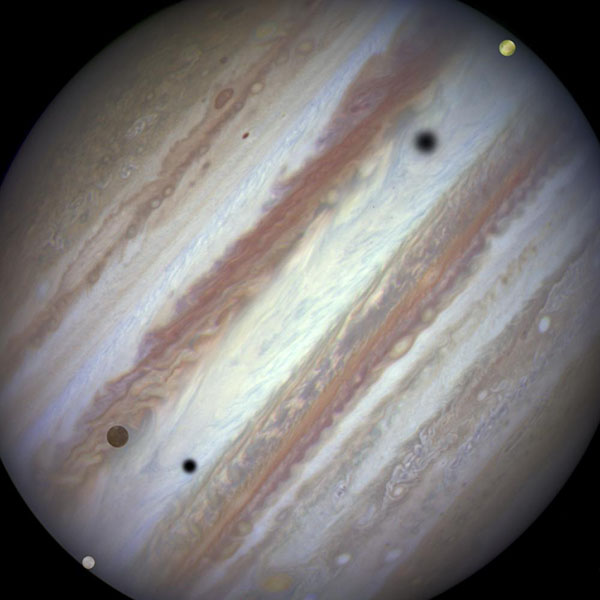Science Snippet:
2022 Astronomy Challenge Project 1

We’ll begin our search by looking for one of the brightest objects on the list, the planet Jupiter. Around half an hour after sunset look southwest. You should see a bright “star” about halfway up the sky. There should not be much else visible in the sky at this time so if you see a star, it’s Jupiter. It looks so bright because it is such a big planet. In addition, Jupiter’s atmosphere is very reflective. Jupiter is very unlike our own planet. It is 11 times the size of Earth. If Earth was the size of an average apple, Jupiter would be a ball as tall as a two-year-old. In fact, Jupiter has a mass 2.5 times that of all the other planets combined. Jupiter, however, isn’t solid like our planet. It is a type of planet known as a gas giant. Jupiter is 90% hydrogen and almost 10% helium. Hydrogen and helium would float away on Earth. These gasses form a dense cloud layer many miles thick. Under the cloud layer, the hydrogen becomes liquid under Jupiter’s intense pressure forming the largest “ocean” in the solar system. We can’t land a spacecraft on Jupiter because it doesn’t have a surface. In theory, a spacecraft might be able to fly through Jupiter but the intense pressure and heat would destroy anything that tried to make such a flight. We still don’t know if far under the giant hydrogen ocean there could be a solid rocky core. Or the whole planet might just be like a very hot soup. (The “soup” would be hotter than any soup you could find on earth. Jupiter’s center may be around 43,000 °F. By comparison, the sun’s surface is around 10,000 °F! Jupiter’s atmosphere, however, is frigid. The temperature at its cloud tops is around -294 °F which is over 100 °F colder than the coldest temperature recorded on Earth. This cold cloud layer is full of storms. With no surface to slow them down, the storms can rage for hundreds of years. With small telescopes, astronomers could see four of Jupiter’s moons. (Jupiter’s largest moon is bigger than Mercury!) Using large instruments, we now know of more than 80 moons. Everything on Jupiter is on a large scale!
To see more about the 2022 Astronomy Challenge click here.
